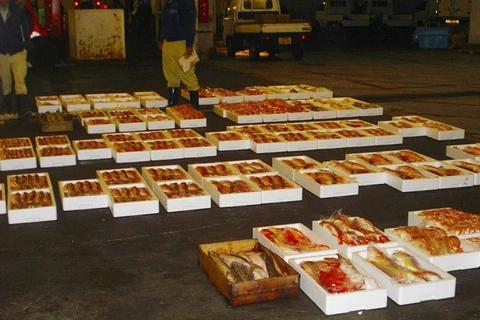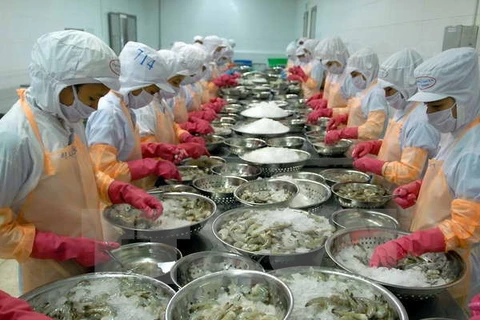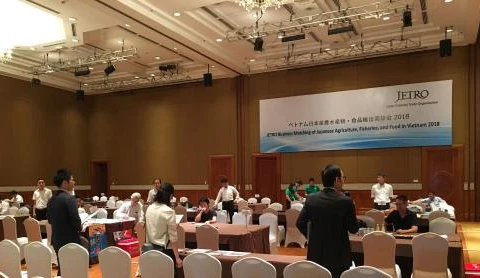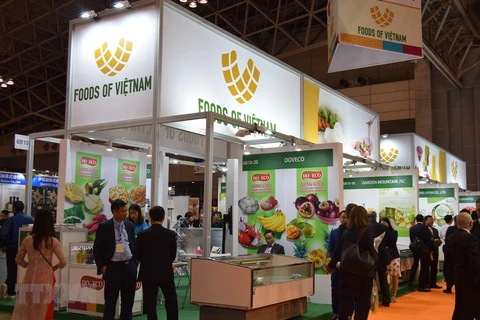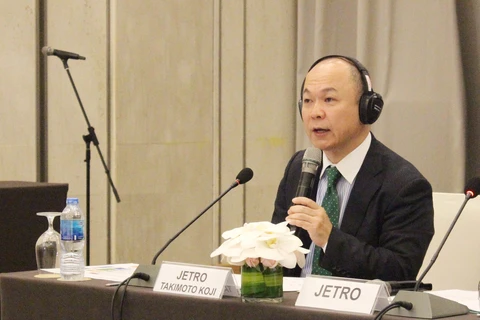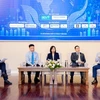 A Japanese restaurant in downtown HCM City’s District 1 is owned and managed by Vietnamese. (Photo: VNA)
A Japanese restaurant in downtown HCM City’s District 1 is owned and managed by Vietnamese. (Photo: VNA)
HCM City (VNS/VNA) - Japanese investors are pouring money into hundreds of restaurants in Vietnam as local incomes continue to rise around the country.
Japanese restaurants began to appear in the 1990s, but the number has soared in recent years.
Chains like Tokyo Deli, Yakimono, Sushi Rei and Gyu Shige can be seen on busy streets in Hanoi, HCM City, and in other major cities and provinces.
Many Japanese restaurant chains have expanded operations in the country, with more than 1,500 Japanese restaurants.
Gyu Shige BBQ Restaurant, with 130 restaurants in Japan, officially entered Vietnam in 2016 with its first store in HCM City, while the chain Ootoya recently opened its second restaurant at the Bitexco Tower in HCM City.
More than 10 years ago, Okamura Food-Japan cooperated with Trung Son Food JSC to open the Tokyo Deli restaurant chain in Hanoi and HCM City.
After 12 years of operation, there are now 20 branches of Tokyo Deli in the country. It targets having 50 restaurants nationwide next year.
In addition, the Hatoyama Japanese seafood restaurant under the Migroup Investment and Trading JSC recently opened its second branch in Hanoi, bringing the total number to three in Vietnam.
In 2017, there were 650 Japanese restaurants in HCM City, three times the number in 2014, according to statistics from the Japanese Consulate General in HCM City.
Half of the Japanese restaurants in Vietnam are owned and operated by Japanese, with the rest by Vietnamese through franchise models.
When entering the local market, Japanese food enterprises have a tendency to adapt to Vietnamese tastes.
Besides the restaurant sector, Japanese investment in Vietnam in general and the number of Japanese visitors to Vietnam have both increased, as well as accompanying services.
The potential also comes from increased spending on food from Vietnamese.
According to Vietnam Report JSC, a market research and business assessment company in Hanoi, Vietnam’s annual food consumption is estimated to account for 15 percent of its GDP.
Japanese culture is known for its elegance and sophistication and unrivaled standards of quality of both dishes and service as well as higher prices. As a result, many of the Japanese restaurants target mid- and high-income customers.
But, as the Vietnamese middle class continues to grow, with a focus on healthy food, consumers are willing to spend more for higher quality products.
To decrease the cost of ingredients, Japanese investors are beginning to look for local partners to ensure supplies that satisfy Japanese standards but at a much lower cost.
As of the end of last year, more than 57 billion USD worth of Japanese capital was invested in Vietnam with nearly 4,000 projects, according to figures from the Ministry of Planning and Investment.
Last year, Japan was Vietnam’s largest FDI investor with a total registered capital of nearly 8 billion USD, accounting for 31 percent of the country’s total FDI.
A recent report from the Japan External Trade Organisation survey on investment trends among Japanese firms operating in Vietnam in the 2018 fiscal year showed that nearly 70 percent of Japanese businesses wanted to expand operations in the southeast Asian country.-VNS/VNA
